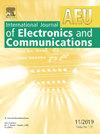毫米波通信混合波束形成优化设计:一种多尺度卷积神经网络方法
IF 3.2
3区 计算机科学
Q2 ENGINEERING, ELECTRICAL & ELECTRONIC
Aeu-International Journal of Electronics and Communications
Pub Date : 2025-06-25
DOI:10.1016/j.aeue.2025.155913
引用次数: 0
摘要
混合波束形成(HBF)在毫米波(mmWave)大规模MIMO通信系统中表现出色,因为它能够提高频谱效率,同时通过结合模拟和数字波束形成的优势降低硬件复杂性和功耗。然而,HBF设计面临两个主要挑战。首先,它严重依赖于在实际系统中难以获得的精确信道状态信息(CSI)。其次,由于数字和模拟波束形成之间的优化变量耦合,HBF设计通常涉及复杂的非凸优化问题。为了解决这些问题,本文提出了一种通用的高性能多尺度卷积神经网络(MSCNN)框架,用于优化HBF设计。结合多尺度卷积(MSC)模块和通道注意机制(CAM)的网络利用估计的CSI输入增强了特征提取和优化,显著提高了处理能力和鲁棒性。考虑到硬件的限制,我们设计了一个专门的Lambda层,直接输出优化的模拟波束形成矢量,以满足恒模约束。此外,采用无监督深度学习策略对神经网络进行训练。该策略通过直接优化负谱效率,而不依赖于传统的训练标签,降低了训练开销,提高了模型性能。此外,该网络在多个信道模型上进行了验证,证明了它在适应不同信道条件方面具有良好的泛化能力。仿真结果表明,所提出的MSCNN在频谱效率和收敛性能方面明显优于现有方法,并具有对不同信道的兼容性。本文章由计算机程序翻译,如有差异,请以英文原文为准。
Hybrid beamforming optimization design for millimeter-wave communications: A multi-scale convolutional neural network approach
Hybrid beamforming (HBF) particularly demonstrates outstanding performance in millimeter-wave (mmWave) massive MIMO communication systems due to its ability to enhance spectral efficiency while reducing hardware complexity and power consumption by combining the advantages of analog and digital beamforming. However, HBF design faces two major challenges. First, it heavily relies on precise channel state information (CSI) which is difficult to obtain in practical systems. Second, HBF design typically involves complex non-convex optimization problems due to the coupling of optimization variables between digital and analog beamforming. To address these issues, this paper proposes a general and high-performance multi-scale convolutional neural network (MSCNN) framework for optimizing HBF design. The network incorporating multi-scale convolution (MSC) module and channel attention mechanism (CAM) enhances feature extraction and optimization by leveraging estimated CSI inputs, which significantly improves processing capability and robustness. Considering the hardware limitation, we design a specialized Lambda layer that directly outputs the optimized analog beamforming vector to satisfy the constant modulus constraint. Additionally, an unsupervised deep learning strategy is adopted to train the neural network. By directly optimizing the negative spectral efficiency without relying on traditional training labels, the strategy reduces training overhead and improves model performance. Furthermore, the network is validated across multiple channel models, which demonstrates its excellent generalization in adapting to varying channel conditions. According to simulation results, the proposed MSCNN significantly outperforms existing methods in terms of spectral efficiency and convergence performance and exhibits compatibility with different channels.
求助全文
通过发布文献求助,成功后即可免费获取论文全文。
去求助
来源期刊
CiteScore
6.90
自引率
18.80%
发文量
292
审稿时长
4.9 months
期刊介绍:
AEÜ is an international scientific journal which publishes both original works and invited tutorials. The journal''s scope covers all aspects of theory and design of circuits, systems and devices for electronics, signal processing, and communication, including:
signal and system theory, digital signal processing
network theory and circuit design
information theory, communication theory and techniques, modulation, source and channel coding
switching theory and techniques, communication protocols
optical communications
microwave theory and techniques, radar, sonar
antennas, wave propagation
AEÜ publishes full papers and letters with very short turn around time but a high standard review process. Review cycles are typically finished within twelve weeks by application of modern electronic communication facilities.

 求助内容:
求助内容: 应助结果提醒方式:
应助结果提醒方式:


